Choosing Your Dental Braces
Choosing The Best Type Of Dental Braces For Yourself
The two main groups of commonly used appliances are braces and clear aligners.
Braces
These generally refer to appliances consisting of brackets which are attached onto your individual teeth. A wire is then tied into these brackets. The wires and various types of elastics are used to move your teeth. There are a few variations of brackets systems. The difference is mainly the material and the way the wire is tied into the brackets.
Bracket materials:
- Metal
- Ceramic
- Metal with gold coating
- Plastic
Tying method:
- Conventional method using small elastics called modules
- Self-ligating (self-tie) brackets that has a built in clip or latch to secure the wire
Braces: Bracket systems
1. Conventional Metal Braces
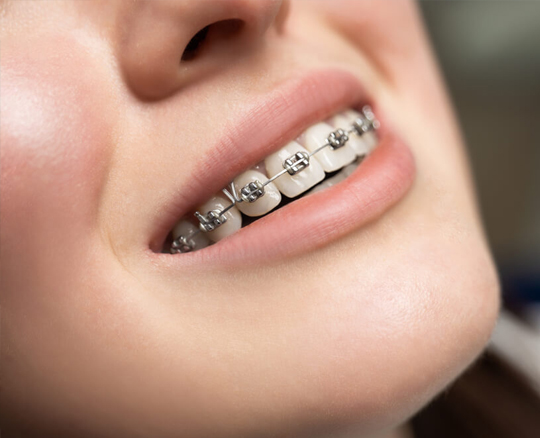
These are the most popular choice of braces. The wire is tied using modules which come in different colours. While being noticeable is commonly thought of as a downside of metal braces, you may actually prefer it for the “classic” braces look. Many look forward to the colours that can choose to tie over the braces (isn’t that the most fun part of braces?!)
Pros:
- Very effective
- Most affordable
- More durable than ceramic braces
Cons:
- Not discreet
2. Conventional Ceramic Braces
These are translucent to blend with your teeth so that they are more discreet. The wire is tied using modules. The wire is made of metal and will be noticeable. While you can choose any colour of modules, most people on ceramic braces choose clear modules since their intention is to have an appliance that is less noticeable. Ceramic braces are more brittle compared to metal braces and have a higher tendency to chip under biting forces. They are also more abrasive and have a higher tendency to wear down your teeth surfaces that are in contact with them.
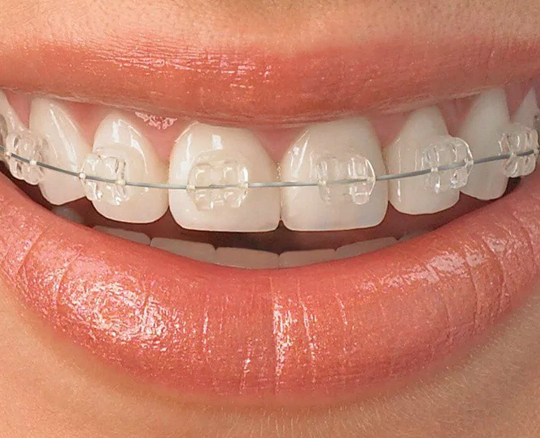
Pros
- Less noticeable
Cons
- Higher cost compared to conventional metal braces
- Fractures more easily compared to conventional metal braces
- Tends to wear teeth surfaces down more compared to conventional metal braces
3. Self Ligating Metal braces
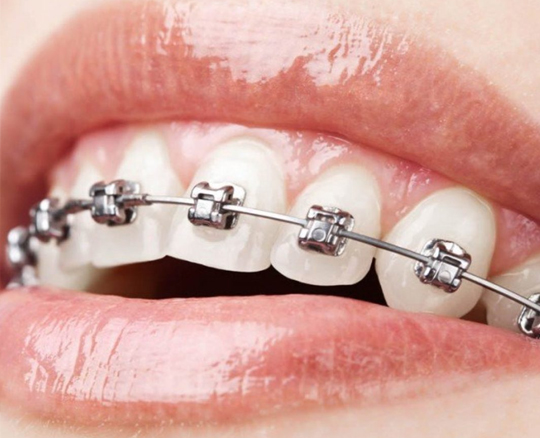
These look similar to conventional metal braces but have a clip or latch to secure the wire within the brackets. Depending on the design, modules can usually still be used, but to a lesser extent. The use of the built in clip reduces friction in the appliance system. This may speed up your treatment and reduce the pain you experience. The actual result however depends on your individual response. This means you may still feel more pain and take longer to complete treatment than another person on the conventional system.
Pros
- Less pain (variable)
- Faster treatment (variable)
Cons
- Higher cost
4. Self Ligating Ceramic braces
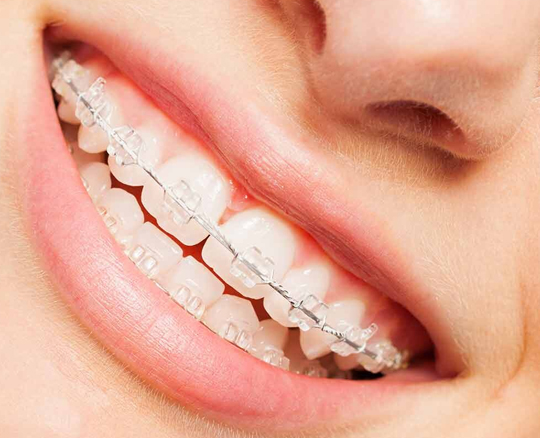
These are the ceramic versions of self ligating braces. They look similar to conventional ceramic braces but have a clip or latch to secure the wire within the brackets. The advantages from self ligation are the same as with the metal version. Just like in the conventional system, ceramic self ligating brackets are more brittle and abrasive to teeth surfaces compared to metal brackets.
Pros
- Less noticeable
- Less pain (variable)
- Faster treatment (variable)
Cons
- Higher cost
- Fractures more easily to metal braces
- Tends to wear teeth surfaces down more compared to metal braces
5. “Gold” Metal Braces

These brackets have a gold tinge which you may feel is nicer compared to the silvery looking classic metal braces. Because of the gold tinge, it tends to blend in better and are not as striking as metal braces. The wire is tied in using modules.
Pros:
- More aesthetic than conventional metal braces
- More durable compared to ceramic braces
Cons:
- Higher cost
- More noticeable compared to ceramic braces
6. Plastic Braces

These look similar to ceramic braces but are made of plastic. The advantage is that it is less abrasive than ceramic brackets and thus have a lesser tendency to wear down your teeth surfaces which come into contact with the brackets. The wire is tied using modules just like conventional ceramic braces.
Pros:
- Similar aesthetics to ceramic braces
- Slightly lower cost compared to ceramic braces
Cons:
- Higher cost compared to metal braces
Clear Aligners
Clear aligners treatment uses removable plastic appliances to move your teeth. The tooth movement is planned in a treatment simulation software which ensures optimal tooth movement.
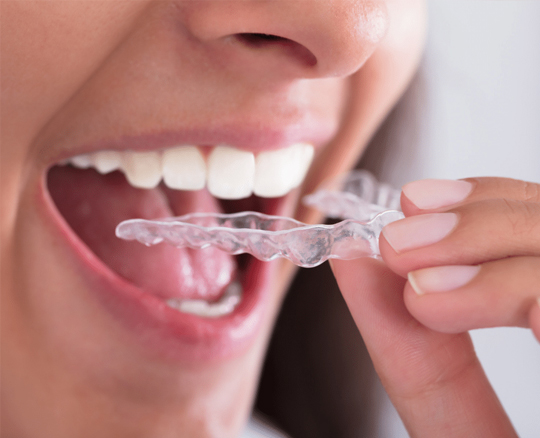
Clear aligners are made for each step of the simulated movement to produce a series of aligners to move your teeth to the final position. You are required to wear each aligner for 2 weeks and take them off only for meals and brushing. As you change to the next steps of aligners, your teeth will move according to the changes on the aligner.
Unlike braces which are glued to your teeth, aligners merely fit over your teeth. Because of this, the control of tooth movement is generally not as good as braces. This is especially for certain types of movements where the force from the aligners cannot be optimally transferred to your teeth.
The force to move teeth needs to be prolonged to create change. Because your aligners can be removed whenever you want to, compliance is critical in determining how well your teeth follow the simulated result. When you do not wear your aligners enough, subsequent aligners will be even less effective and you may need to make a new series of aligners to regain control of your tooth movement.
While most people say that it is an advantage that aligners can be removed, some find it inconvenient when they need to remove them in the presence of others. One example is a person who frequently brings clients out for meals. It would be impolite to remove the aligners in front of a client and inconvenient to excuse oneself to go to the restroom to remove the aligners. Some people who anticipate this would remove the aligner much earlier to avoid such a situation, which results in lower compliance. As such it is important to really consider your lifestyle before deciding if aligners are suitable for you.
Pros
- Extremely discreet
- Better oral health as they can be removed for tooth brushing
- Enjoy your food more as they can be removed during meals
Cons
- Compliance is very important
- Higher cost
- Less control compared to braces
Keen to find out more about getting braces in Singapore? Read our guide here.

